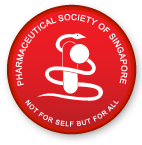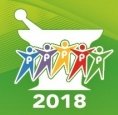The following article is extracted from an article first published in Singapore Medical Journal, 2002, Vol 43 (5) , pg 224-225
by S Y Tan, Professor of Medicine, University of Hawaii. An article published in the 100th year anniversay souvenir magazine of Thong Chai Medical Institution also pay tribute to this great physician and apothecary.
Sun Si Miao lived and practised in China during the Tang Dynasty (619-907 A.D.). Born in 581 A.D. in Huayuan (Jingzhao), he was a sickly child, and the cost of medical treatments that reduced his family to poverty, motivated him to enter into the study of medicine. He rapidly learned the wisdom of Taoism, Confucianism and Buddhism, mastered the Chinese classics by age twenty, and quickly rose to renown for his apothecary skills.
Although Sun Si Miao travelled distances as far as Sichuan province in search of medical knowledge and herbal prescriptions, he lived most of his life secluded in the caves of Wubai Mountain. Preferring the simplicity of a hermit’s life, this great and humble physician spent his professional life treating all who were unfortunate enough to be stricken with disease, and turned down official court positions that were offered to him by three successive Chinese emperors.
Dr. Sun wrote prodigiously, producing his famous 30-volume book “Prescriptions Worth a Thousand Pieces of Gold” (Qian Jin Yao Fang). The book, a classic text of prescriptions, significantly updated China’s original medical treatise, the Neiching, which was put together around 100 B.C.
A second volume, published shortly after Dr. Sun’s death in 682 A.D., was entitled Qian Jin Yi Fang. In it, the author drew special attention to folk remedies, with some two thousand formulas and references to acupuncture points (thirteen of them) that were believed to be effective as demon-releasing points to be used in exorcisms.
So impressive were Sun’s teachings that in the 10th century, they were incorporated into the famous Japanese medical text, the Ishimpo. A fundamental underpinning of Chinese medicine revolves around the twin forces of nature, yin and yang, whose balance is believed to be integral to a person’s health. The legend of Sun Si Miao is a legend of commanding control of these forces.
In paintings and other works of art, he is regularly featured showing a tiger (yin) below at his feet, and a dragon (yang) above in his outstretched hand.
One of the first physicians to recognise the health promoting role of good nutrition, herbs and natural supplements, Sun Si Miao once said that, “Anyone over forty years old should try to avoid laxatives which will weaken his body, and begin to take tonics. Anyone over fifty years old should take tonics all year round; such are the secrets of nourishing life to enjoy longevity.”
One of Dr. Sun’s longevity tonics, called “sweet apricot mixture” is concocted as follows: “You fry 5 kg of sweet apricot kernel quickly over low heat until dry, grind it into powder and immerse it in rice wine. Next, you strain it and mix the liquid with 2.5 kg of honey to make a 7.5 kg mixture, which you boil over low heat again, until it becomes as thick as jelly.
Then you put it in a container and seal it tightly. Take 20 to 35 g of this liquid per dosage to recover from an illness and achieve longevity.” (from Henry C. Lu’s Chinese Natural Cures)
DIET BEFORE DRUGS
Sun Si Miao preached the primary importance of a proper diet with the simple axiom that “living beings have always depended on food to maintain their life.” He wrote on the positive and negative aspects of foods, their benefits and harms. In words that ring true to the present day, he cautioned that “those who practise medicine must first recognise the origin of an illness; they must know which violations have caused the suffering. Then they must treat it with dietary means. If dietary therapy does not cure the illness, only then can they employ drugs.”
Despite his masterly command of herbal medicine and folk remedies that earned him the title “Medication King” (yaowang), he warned against the indiscriminate and careless use of drugs: “The nature of drugs is violent, just like that of the imperial soldiers. Because the soldiers are so wild, how could anybody deploy them recklessly? If they are deployed inappropriately, harm and destruction will result everywhere. Similar excessive calamities are the consequence if drugs are thrown against
illnesses carelessly.”
OTHER MEDICAL CONTRIBUTIONS:
The following are among some of the many contributions by this great physician:
• that goitre in mountainous regions could be cured with seaweeds (which contain iodine) or with thyroid gland extracts from sheep and deer; (Sun already recognised that this in the 7th century)
• that night blindness could be successfully treated with livers from oxen and sheep (vitamin A);
• that beriberi is curable with unpolished rice which contains vitamin B. (Europeans first know of this fact in 1642 CE, which is 1000 years after Sun's time!)
Dr. Sun also made significant contributions in ophthalmology and in women’s health.
In the beginning chapters of his book, he reasoned that special prescriptions were necessary for women because “they get pregnant, give birth and suffer from uterine damage,” and estimated that women’s disorders were “ten times more difficult to treat than those of males, perhaps because of yin influences (swelling and dampness).”
CHINA’S FIRST “CODE” OF MEDICAL ETHICS
To Sun Si Miao goes the credit for the first “code” of medical ethics in China.
It is less of a formal code, and more of a reminder. Dr. Sun stated simply his belief of what the virtuous physician ought to do, and what he ought to refrain from doing.
Clearly influenced by Taoist principles, his code of conduct echoed remarkably that of Hippocrates, and established for generations of Chinese physicians a professional standard to live by.
The main ethical principles focused on compassion, justice, beneficence, and humility. These values remain valid today, and define the ethical doctor.
They are presented below in condensed form (adapted from S. Dharmananda’s Sun Si Miao: Author of the Earliest Chinese Encyclopedia for Clinical Practice):
• Look upon those who have come to grief as if he himself had been struck, and he should sympathise with them deep in his heart.
• Do not give way to wishes and desires, but develop first a marked attitude of compassion.
• Do not ponder over his own fortune or misfortune and thus preserve life and have compassion for it.
• Whoever suffers from abominable things, such as ulcers or diarrhoea, will be looked upon with contempt by people. Yet even in such cases, an attitude of compassion, of sympathy, and of care should develop; by no means should there arise an attitude of rejection.
• Treat all patients alike, whether powerful or humble, rich or poor, old or young, beautiful or ugly, resentful relatives or kind friends, Chinese nationals or foreigners, fools or wise men.
• Neither dangerous mountain passes nor the time of day, neither weather conditions nor hunger, thirst nor fatigue should keep him from helping whole-heartedly.
• Make a dignified appearance, neither luminous nor sombre.
• It is not permissible to be talkative and make provocative speeches, to make fun of others and raise one’s voice, to decide right from wrong, and to discuss other people and their business.
• The wealth of others should not be the reason to prescribe precious and expensive drugs, and thus make access to help more difficult and underscore one’s own merits and abilities. Such conduct has to be regarded as contrary to the teaching of magnanimity. The object is to help.
Contributed by: Raymond Goh
**********


